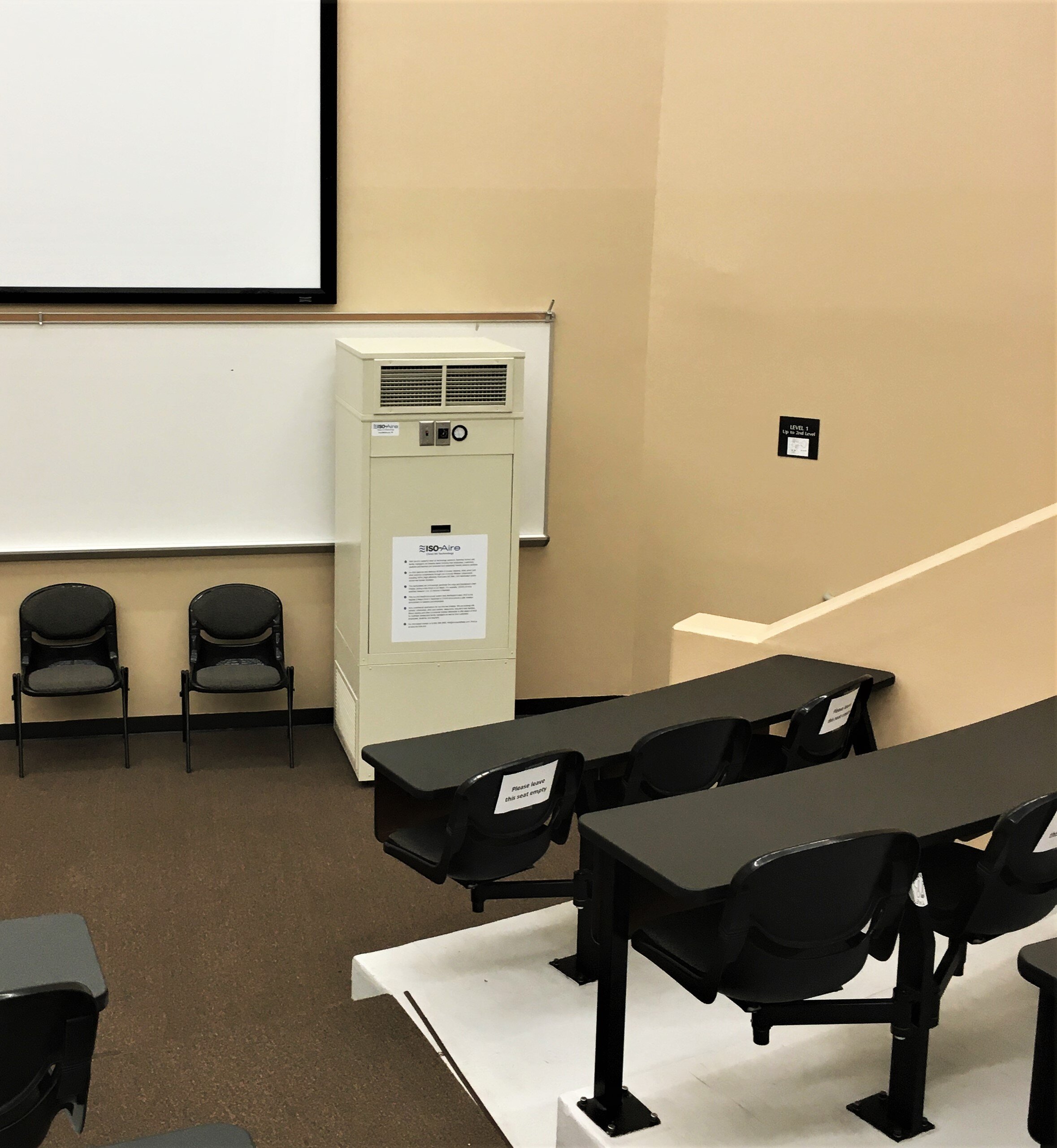Stetson University Installs Air Purifiers with HEPA and Ozone-free Bipolar Ionization
Historic University Makes History Again with Installation of ISO-Aire™ Units
Stetson University, a top-ranked private college in Central Florida, is welcoming students back to campus with Safer Stetson protocols in place. Included in the college's risk mitigation handbook for COVID-19 preparedness, Stetson's facilities management team is following safe indoor air filtration guidance from ASHRAE. Steps to reduce the transmission of airborne germs through the utilization of supplemental devices includes the installation of six patent-pending ISO-Aire™ HEPA air purification units in larger community spaces such as the campus cafeteria, classrooms and the music performance hall.
Stetson is the first college to proactively purify the indoor air with supplemental ISO-Aire clean air technology.
Each recirculating unit contains dual medical-grade filtration including a 99.99% HEPA filter as well as ozone-free bipolar ionization. Together the proven components protect the space by helping to ensure 99.99% of potentially harmful air particulates like viruses, bacteria, mold, and pollen are captured and destroyed.
The ISO-Aire™ units utilize an "offense" and "defense" strategy:
A continuous output of positively and negatively charged ions “scrubs” the air. The proactive ions work offensively, attaching themselves to airborne particles and agglomerate, meaning they surround particles helping them gain mass. As the clusters bulk up, some fall to the floor while others will be pulled toward the building’s HVAC system or into the ISO-Aire™ unit, where they are captured by the "defense" – the front line pre-filter or ultimately the 12-inch HEPA
Emerging evidence and clean indoor air advocacy from public health officials is urging leaders to invest in further research to understand how COVID-19 can be transmitted by airborne particles. Microscopic particulates, such as coronavirus particles that measure .1 to .12 microns in diameter, can penetrate the lungs and bloodstream when inhaled, posing a dire threat to human health. These are captured and eliminated inside the ISO-Aire™ unit ensuring cleaner, safer indoor air for all.




